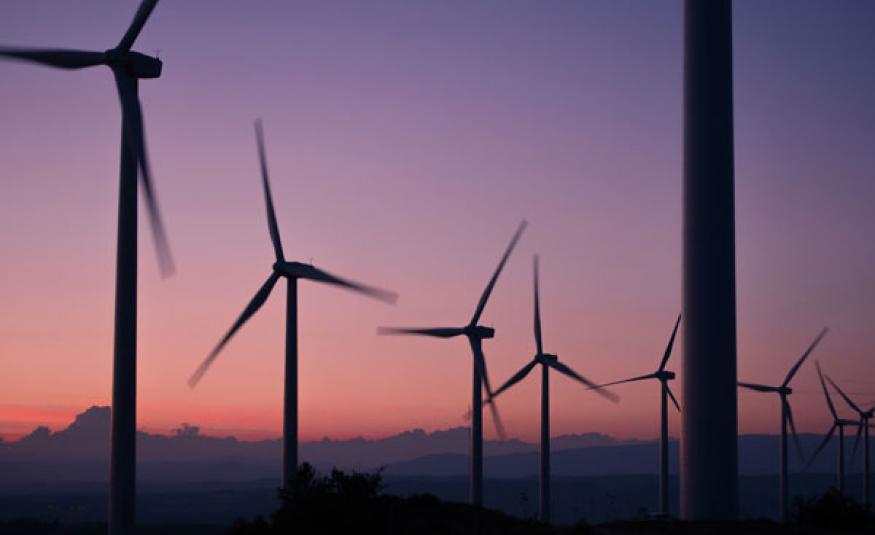Sam Rowe, CEO of agency Ignition, examines where the responsibility for sustainability lies within the events industry.
The battle to get large company clients interested in sustainability is basically over. They’re talking about it, at the very least, or else they’re forming and exercising environmental and social impact policies. Sustainability is on the strategic agenda to stay. But other debates remain, including how to convince clients that sustainable can also be beautiful and, at the same time, make good business sense. Closer to home, we all still work in an industry that’s a long way from being a credible flag-flyer for sustainability. Where does the onus for change lie? With clients, exhibition organisers and regulating bodies? With designers and suppliers? Or with the rules laid down by the owners of exhibition premises?
As designers and managers of exhibits, events and brand experiences, we would say that the onus lies with all parties, but we certainly think we should be leading the way, fully able to reassure our clients about the quality, cost and creativity of a sustainable agenda. The architectural and construction industries are generally some way ahead of the other creative industries, both voluntarily and legally, when it comes to the design of new or refurbished buildings, pioneering minimal solar gain, low-energy lighting, recycled materials, photovoltaic panels, ground source heat pumps and natural ventilation. But what about what goes on inside? How many times have we talked to clients at shows about the level of waste created in the assembly and dismantling processes? Clients themselves talk of that uncomfortable moment when the skips arrive at the end of the final day, knowing that during the tendering stage, more environmentally-positive solutions have often been discounted in favour of more ‘cost-effective’ methods. It’s still too easy for sustainability to drop down the requirement list.
When we first started in this industry, the scale of waste was frankly horrific. At the end of almost every event, we’d see skips piled high with nearly every element of the build. We therefore became the first business in our industry to receive ISO 2012-1 accreditation and were determined to create a new kind of business model that stood in opposition to the unprincipled culture of non-biodegradable materials wastage turning up in landfills.
As a business, we seek to confront cost issues pro-actively, encouraging clients to think in a longer-term way about their commitment to shows over a number of years. Modular set-ups are not only more sustainable, but also lead to speedier assembly and disassembly, flatter packing and lower transportation costs. Elements of a stand can live on in other arenas too, re-used as point-of-sale for a retail outlet, for example, whilst a stand-out totem could transfer to an office reception, helping to create a high-impact sense of arrival. To prevent wastage, a company’s actual products can be even incorporated into a stand, as we did for with retailer Vital Baby at this year’s Kind und Jugend child and baby show in Germany, where the company’s baby and toddler feeding items were hung on strings within a cloud-format entrance area to create a high-impact and reusable sculptural feature.
There are other advantages of a pro-active approach to sustainability too. Pro-environmental practices create positive brand associations among consumers and other macro audiences – politicians and regulators for instance, anticipating regulatory trends and positioning clients favourably when such policies become law. The mindset looking to create further efficiency in materials and less waste also tends to carry over into other areas, whilst the innovation required to overcome environmental challenges tends to promote innovation generally within a business.
When it comes to the lingering suspicion that sustainable principles, however worthy and laudable, might result in stands that are simply not sexy enough, we’re happy to take up that challenge as well. Creativity often flourishes best within limitations after all and modular systems are as wonderfully simple and flexible as Lego. If a child can create a fantasy castle, city or wonderful from basic brick components, why can’t we and our client teams do the same?
Answers can be as deceptively simple as adding curves to change a line of sight or creating unexpected height or angles. Interchangeable elements such as graphics, AV and other technologies always guarantee contemporaneity and it won’t be long until we see bendable, foldable display screens that can be manipulated like paper - particularly useful when dealing with highly regulated industries, where the varying laws of different countries can signify different rules about what can and can’t be displayed, meaning multiple versions of artwork might soon be a thing of the past. Start-up company Royole is now producing incredibly thin flexible phone displays, whilst, at CES, LG showed off a 65” screen that rolls up. We just need them to be bigger and/or more affordable, but that will come!
So, can adopting a ‘triple bottom line’ framework – people, profit, and planet – really work and how close are we to seeing mainstream business leaders take sustainability seriously as a critical driver of profit and resilience? How high up on the agenda is it right now in procurement departments? We know that the kind of change we need to bring about is above all cultural, helping clients marry their sustainability agenda with a ‘How can we move forward?’ mindset, rather than always asking, ‘So, what did we do last year?’






